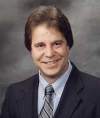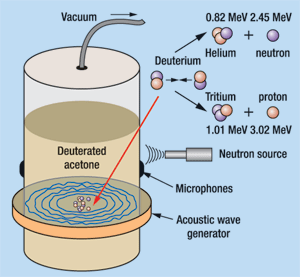What's new in exploration
Free energy? (or TANSTAAFL1). The wizards of physics are at it again: cheap and easy fusion energy. Unlike its forecousin, Cold Fusion, the new process does not suffer from an oxymoronic namesake. Even most lay folks know that fusion is what powers the sun, and it requires at least a kajillion degrees to start the reaction. I think that if University of Utah researchers Martin Fleischmann and Stanley Pons – inventors of Cold Fusion in 1989 – had simply given the phenomenon a different name, say, VSR, for Very Strange Reaction, a great waste of time and money, as well as embarrassment and bad press could have been avoided. Cold Fusion came up short in two other aspects: the conventional, telltale signs of fusion, and experimental repeatability. The new fusion process being touted has the requisite temperature, produces the neutrons and tritium that theory calls for, and is repeatable. Well, maybe. The first attempt to repeat the experiment has proven problematic, and an array of naysayers has already amassed. By the time you read this, much will likely have happened. Regardless of which side ultimately prevails, in the meantime, con-fusion will most likely reign. Before discussing this potentially extraordinary event, let’s give it a name. I propose 3TF, for Taleyarkhan Tabletop Fusion. It doesn’t convey much, and it sounds cool while avoiding the contradiction of low temperature.
Rusi Taleyarkhan and five colleagues wrote the paper, Evidence for Nuclear Emissions During Acoustic Cavitation. (Sounds like a real page-turner, doesn’t it?) Here’s how it works: "Sonoluminescence is induced in solutions of deuterated acetone which is subjected to sound waves and neutron radiation." "Heck," you say, "I was pitching that to my boss last week!" But for the rest of us, to be thoroughly confused, see the diagram below. The fact that this paper was published at all is itself a controversy. Oak Ridge National Laboratory, where Taleyarkhan works, tried to rescind its previous approval. Others who have tried and failed at the same experiment cried foul, and Bob Park of the American Physical Society has pronounced it suspect, if not bogus, and derided Science editor-in-chief Don Kennedy for printing it despite appeals for delay. However, the paper was properly peer reviewed, and permissions were sought and granted. In an unusual move, perhaps due to its importance, or because Park broke an embargo by discussing it online on March 1, Science first published the 3TF article on the Internet on March 4, prior to its debut in its March 8 issue. As Kennedy put it, "[Let’s] wait for the scientific process do its work." The fear is that Bill O’Reilly, Dan Rather and editors like me will prematurely – and incorrectly – hype it up. (Well, two out of three ain’t bad.) Two papers on the topic, plus Science’s defense of its gumption to publish such "heresy," can be read at: http://www.sciencemag.org/feature/data/hottopics/bubble/index.shtml. It should be noted that in the last year or so, other fusion reactions have been achieved without the controversy. Unlike the tabletop apparatus, those experiments involved extreme magnetic fields or very powerful lasers and were (properly!?) neither cheap nor easy. I checked my natural gas stocks, and they were up, so I guess the status quo is safe – for now. Another good discovery. Amerada Hess reported a new oil field offshore Equatorial Guinea on Block G in Rio Muni basin. The Akom discovery was made in the G-7 well and encountered 162 ft of net oil pay. The well was drilled to a TD of 8,140 ft in about 1,456 ft of water. G-7 is located about 12 mi northeast of Amerada Hess’ Ceiba field and 2 mi southeast of the recently announced Ebano discovery. The well encountered reservoirs similar in quality to those of the Ceiba and the Okume, Oveng and Ebano discoveries, with comparable porosity and permeability. Development options are being evaluated for the Okume, Oveng, Ebano and Akom discoveries while exploration drilling continues. The imminent arrival of a third drilling rig, the Sovereign Explorer, will permit acceleration of drilling offshore Equatorial Guinea. Amerada Hess is operator of Block G and adjacent Block F with an 85% working interest. Energy Africa of South Africa has the remaining 15% working interest. The government of Equatorial Guinea has a 5% carried interest in Ceiba field production and would have a carried 5% participating interest in any Okume, Oveng, Ebano and Akom area commercial production.
|
|||||||||||||
- Prices and governmental policies combine to stymie Canadian upstream growth (February 2024)
- U.S. producing gas wells increase despite low prices (February 2024)
- U.S. drilling: More of the same expected (February 2024)
- U.S. oil and natural gas production hits record highs (February 2024)
- Quantum computing and subsurface prediction (January 2024)
- U.S. upstream muddles along, with an eye toward 2024 (September 2023)




